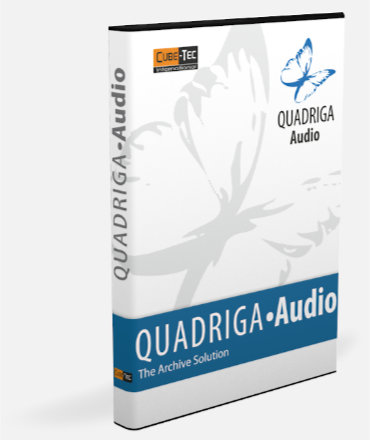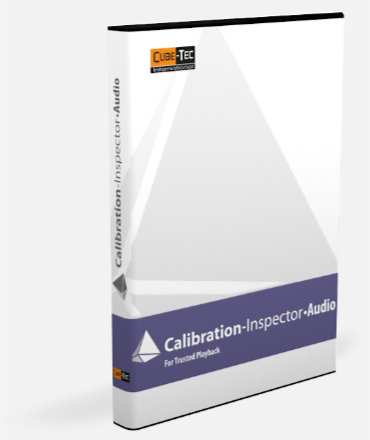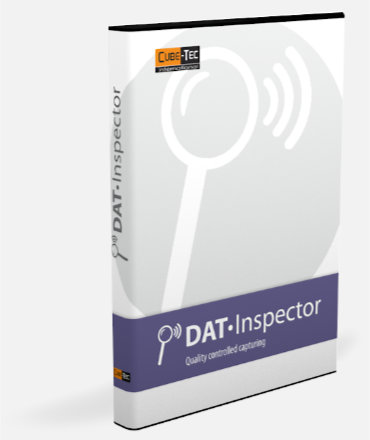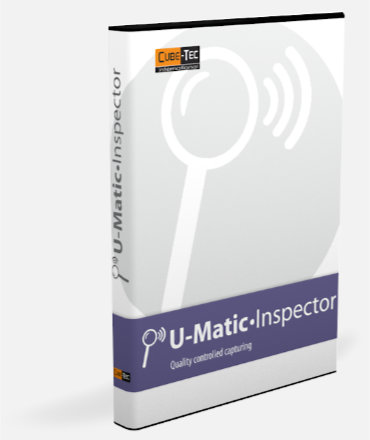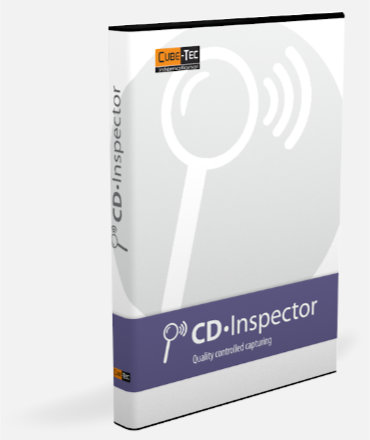
CD•Inspector
Cube-Tecs CD•Inspector ist der weltweite Standard für die professionelle Aufnahme von Audio-CDs für Archive sowie für die Übertragung von Audio-CDs in Massenspeicher-Systeme. Unübertroffen in seiner Qualität und Zuverlässigkeit ist der CD•Inspector die erste Wahl, egal, ob Sie ein paar hundert CDs erfassen oder 100.000 CDs mit höchstmöglicher Sicherheit in ein Massenspeichersystem übertragen müssen.
Die zweite Generation der CD•Inspector Software verfügt über eine drastisch erweiterte Liste an Funktionalitäten. Neben den Exportmöglichkeiten für Broadcast Wave Format (BWF), Microsoft Wave und AIFF können die Audiodaten auch in PreMaster-Formate (DDP) und Intermediate Wave gespeichert werden, um weitere Verarbeitung zu ermöglichen. Die Übergabe von Informationen in bestehende Datenbanken wird durch Verwendung unseres standardisierten XML-Formats vereinfacht. Der Export von CD-Text sowie das Erkennen und Speichern von Multisession-CDs in einem ISO-Image sind Standardfunktionen der CD•Inspector Software.
Der stark vereinfachte Workflow des CD•Inspector sorgt für höchste Effizienz und Qualitätsüberwachung. Der CD•Inspector bietet ebenfalls eine nahtlose Integration in die Archivierungsumgebung von QUADRIGA•Audio.

Features
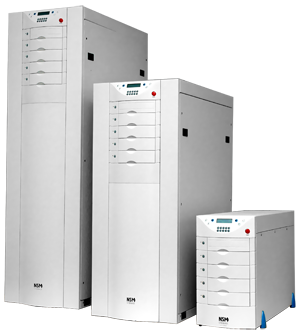
Scalability
Whether you decide on the Jukebox version with a processing capability of up to 705 CDs per job, or one of the manual versions, is only dependant on your requirements. The Jukebox can be loaded in the evening, unloaded in the morning and work overnight without any operator interaction.
CD•Inspector Discrete
The Discrete version uses external CD drives, that can be easily connected via USB 2.0 or Firewire. Up to 16 drives (theoretically more) can be used in parallel - it is dependant on your requirements.
CD•Inspector Jukebox
There are 3 versions of jukeboxes, that currently can be used with the CD•Inspector. They differ in the amount of media slots and the number of drives to be installed.
- NSM 3000 - 145 to 285 media, up to 6 drives
- NSM 4000 - 260 to 415 media, up to 7 drives
- NSM 7000 - 510 to 705 media, up to 14 drives
Simple, yet Effective...
Manual operation of the CD•Inspector only requires the removal and insertion of the CDs. Entering the archive number will either be requested directly for each inserted CD, or the archive number can be specified upfront by using a job sheet and operator will then confirm the number after inserting each CD. The Jukebox version will either assign the archive number automatically, or use specified numbers provided in a job sheet. Using the barcode labels on the Jukebox packages minimizes misplacement errors during the CD loading process. Once the Jukebox is loaded, all processing is carried out without any operator interaction required.
XML metadata
Controldata and metadata in XML
The CD•Inspector software is fully controllable by XML based job sheets. Metadata generated by the CD•Inspector is also stored in XML format.
Import: Jobs can be triggered from a database through the integrated XML interface. Jobs could be single tracks, compilations, entire CDs or even the assembly of audio files with content captured from multiple CDs. Import of existing metadata from a database is also supported.
Export: All metadata used for the current job or that is collected during the capturing process is automatically stored in XML files. Thus, the association to the origin of the audio tracks is easy to establish and to monitor. The XML file contains a detailed history of each step up to the current audio file. By using the XML format, this data can easily be re-entered into existing databases.
Precision and Speed
Outstanding Precision In the industrial context, the CD•Inspector is used for the production of CD PreMasters. Similar precision is required when an archive is to be established. When capturing CDs, it is absolutely necessary to have a reliable one to one conformity between the archived content and the content of the CDs, without the "listening in" of expensive qualified personnel. The quality is assured through our monitoring algorithms and our Cube-Tec Subcode-BitProof-Technology. Our AdaptiveSpeed algorithm provides the speed, which leaves other industrial capturing solutions behind. PreMaster Quality The captured audio material contains absolute PreMaster quality. Therefore, it can be made available as a DDP file to CD pressing plants without any further modifications. Unrivalled speed By combining Cube-Tec Subcode-BitProof-Technology and sophisticated logistics, it is possible to capture up to 1,100 CDs of 60-minute duration within 24 hours.
Monitoring and Algorithms We clearly distinguish between media and audio events. Media events are all the events that are contained on the original medium itself. This data is read out and saved in an XML report. Events such as ISRC and UPCEAN Check, Tracks and Indices, Audio in Pause / Hidden Tracks, Copy Mode, Emphasis, CD Text, as well as Red Book compatibility, are all included in the XML report. All audible errors of the medium also belong to media events. Detected errors are: C2 errors, Bad Blocks, SampleHolds, Block Repetition and sub-channel errors such as A -Time and R -Time discontinuities. Depending on your requirements, it might be prudent to include an additional monitoring process for the audio events. Audio events correspond to the audible content of the CD. The Audiofile•Inspector is an optional module for the CD•Inspector, and uses the Audiofile•Inspector for a detailed analysis of the audio content.
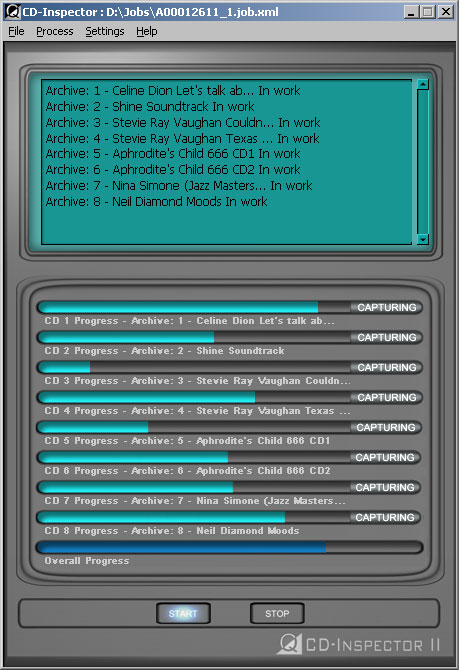
Post Processing
All additional post processing of the audio material can be done fully automatic in DOBBIN.


